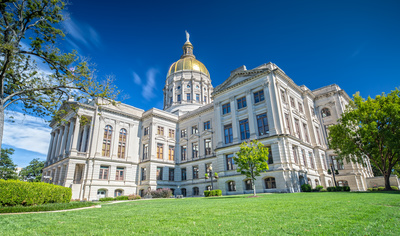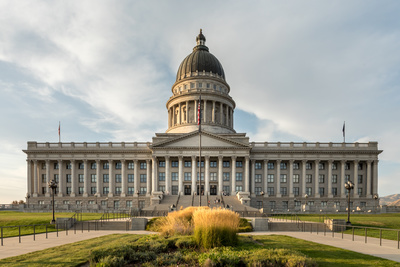
Elections & Campaigns, Energy & Environment
Nine States Face Key Public Utility Commission Elections Ahead of 2026
October 27, 2025 | Billy Culleton
October 31, 2023 | David Shonerd

Key Takeaways:
This article is part of our latest series: Major Issue Trends in 2023: State Legislative Recap. In this series, our experts examine the high-level legislative trends they saw in the 2023 state sessions. In addition to discussing the most prevalent issues considered by state policymakers, they explore some of the more surprising emerging trends we noticed, plus what to expect in 2024 for many of these policy areas. The series will be released during November and December, with new articles each week. Explore the full series here, and be sure to sign up for our email list so you don’t miss out on any articles (check the “Blog Posts” box).
The nation’s push to reduce its emissions and shift to cleaner sources of energy is expected to continue in the state capitals in 2024, but not necessarily in the same direction. While states with Democratic majorities in the Northeast and West Coast move as rapidly as they can to electrify their states’ power supplies, their counterparts in the South, Great Plains, and Southwest have been busy debating policies to reinforce their reliance on natural gas and coal-fired power plants.
Look for California to lead the way, as usual, with bills in this area. We expect to see the Golden State take continued action in the following policy areas:
Increase statewide greenhouse gas emissions standards;
Reduce emissions by economic sectors, such as the building sector (reducing the carbon content of building materials), transportation sector (electrifying the state vehicle fleet and installing more public charging stations for electric vehicles);
Ports (electric ground service equipment); and
Industrial facilities (increasing use of renewable energy and replacing gas boilers).
Lawmakers in Oregon and Washington are usually not far behind those in Sacramento, although Democrats do not own supermajorities in Salem or Olympia, so their advancements are more incremental.
Meanwhile, legislators in New England, New York, New Jersey, Maryland, plus deep blue Illinois and (light blue) Minnesota are adopting their own aggressive electrification policies and moving as well toward adopting California’s zero emission vehicle mandates, including requirements for heavy-duty and medium-duty trucks and buses.
On the other hand, in red states like Texas, Oklahoma, Wyoming, West Virginia, and Indiana — states blessed with abundant supplies of coal, natural gas, or oil — lawmakers aim to protect energy industries that typically make up a huge portion of their states’ economies and to fend off encroachment by renewables. For example, in Wyoming, lawmakers adopted HB 69 in 2023, to fund legal efforts against the other states that adopt laws that could decrease coal use or result in the closing of coal-fired plants. Likewise in Utah, Governor Spencer Cox (R) signed HB 425, promoting “energy security”, which authorizes the attorney general to take action to defend the state against policies that would result in the premature retirement of a coal-fired power plant.
Look for more efforts in red states to protect their fossil fuel industries by branding renewable energy as less reliable, referring to a reduction of power generated by solar facilities on days with less sunlight or wind facilities supposedly laid idle by a lack of wind. Bills to define coal and gas as “dispatchable” sources of energy under any weather conditions will continue to gain steam (pun not intended), and bills to redefine gas as a renewable energy resource are also likely to receive attention in red states in 2024. The labeling of coal and gas-powered electric generating facilities as more secure, reliable, or “resilient” will see much attention and is intended to protect those industries in the states that depend on them.
MultiState’s team is actively identifying and tracking energy legislation so that businesses and organizations have the information they need to navigate and effectively engage. If your organization would like to further track clean energy or fossil fuel issues, please contact us.

October 27, 2025 | Billy Culleton

August 13, 2025 | Bill Kramer

July 8, 2025 | David Shonerd